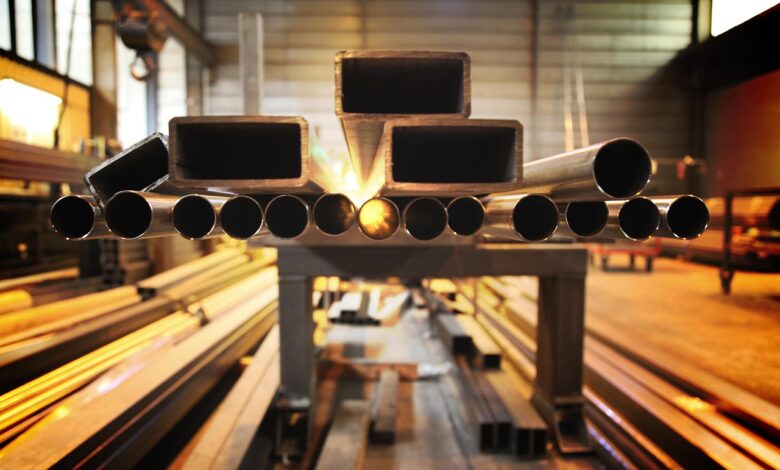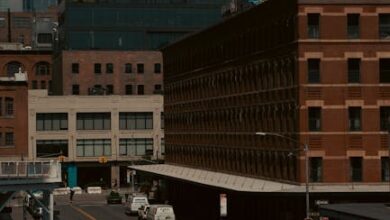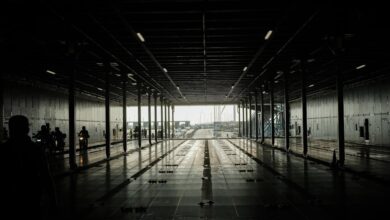One startup’s paper-thin stainless steel could change how bridges are built.

One startup’s paper-thin stainless steel could change how bridges are built.
Estimated Reading Time: 6 minutes
- Allium Engineering introduces a groundbreaking innovation: a paper-thin stainless steel coating for traditional rebar.
- This technology significantly reduces the amount of concrete needed in construction, extending bridge lifespans, and dramatically lowering maintenance costs by preventing corrosion.
- It offers a sustainable solution for infrastructure, reducing the carbon footprint associated with concrete production and minimizing waste over time.
- Beyond bridges, this innovation holds potential for high-rise buildings, marine structures, tunnels, and water treatment plants, setting a new standard for construction durability.
- Infrastructure stakeholders are encouraged to explore pilot programs, educate teams on advanced materials, and advocate for performance-based design standards.
- The Achilles’ Heel of Modern Infrastructure
- Allium Engineering’s Revolutionary Approach
- Beyond Bridges: The Broader Implications
- Actionable Steps for Infrastructure Stakeholders
- Conclusion
- Frequently Asked Questions
The landscape of modern infrastructure is constantly evolving, driven by the dual demands of durability and sustainability. For centuries, concrete and steel have formed the backbone of our bridges, buildings, and essential structures. Yet, this tried-and-true combination faces significant challenges, primarily related to weight, material consumption, and the relentless march of corrosion.
Enter Allium Engineering, a visionary startup poised to redefine structural integrity with a deceptively simple, yet profoundly impactful innovation. Their breakthrough involves a paper-thin stainless steel coating for traditional rebar, promising a seismic shift in how we approach large-scale construction.
This isn’t just about a new material; it’s about a fundamental re-evaluation of structural design principles, material efficiency, and long-term resilience. The implications for critical infrastructure like bridges are immense, offering a path to build stronger, lighter, and more environmentally friendly structures that stand the test of time.
By coating regular rebar with a thin layer of stainless steel, Allium Engineering could reduce the amount of concrete needed to build a bridge while also prolonging its life. This core principle underpins a suite of benefits that could revolutionize civil engineering practices globally.
The Achilles’ Heel of Modern Infrastructure
Bridges, vital arteries of commerce and connectivity, are engineering marvels. However, their reliance on vast quantities of concrete presents inherent limitations. Concrete is heavy, contributing significantly to a bridge’s self-weight and requiring robust foundations. Its production is also energy-intensive, with cement manufacturing alone accounting for a substantial portion of global CO2 emissions.
Beyond weight and environmental concerns, the greatest enemy of concrete structures is often unseen: corrosion. Traditional carbon steel rebar, embedded within concrete, is susceptible to rust when moisture and chlorides penetrate the concrete’s protective layer. This expansion of rust causes internal stresses, leading to cracking, spalling (flaking or breaking away of concrete), and ultimately, structural degradation.
The result? Billions are spent annually on maintenance, repairs, and premature replacement of bridges and other concrete structures. This not only burdens taxpayers but also causes significant disruption, traffic delays, and safety concerns. Finding a solution that addresses both material efficiency and long-term durability is paramount for future-proofing our infrastructure.
Allium Engineering’s Revolutionary Approach
Allium Engineering’s innovation tackles these challenges head-on. Their proprietary process applies an ultra-thin, yet incredibly robust, layer of stainless steel to conventional rebar. This isn’t about replacing steel entirely, but enhancing its most vulnerable aspect: its susceptibility to corrosion.
The benefits of this paper-thin stainless steel coating are multi-faceted and far-reaching:
- Significant Concrete Reduction: Because the stainless steel coated rebar is virtually impervious to corrosion, engineers can design structures with thinner concrete cover, or even reduce the overall concrete volume. This leads to lighter bridge decks, reducing the load on foundations and supporting structures. Less concrete means fewer materials transported and less environmental impact.
- Dramatic Lifespan Extension: The primary cause of premature bridge failure due to material degradation is rebar corrosion. By eliminating this threat, Allium Engineering’s coated rebar effectively extends the operational life of a bridge, potentially doubling or even tripling its service period before major rehabilitation is required.
- Reduced Maintenance Costs: With corrosion largely eliminated, the need for costly inspections, repairs, and concrete patching significantly diminishes. This translates into substantial long-term savings for municipalities and national infrastructure programs.
- Enhanced Durability and Resilience: Bridges built with this advanced rebar will be inherently more resilient to harsh environmental conditions, including exposure to de-icing salts, marine environments, and seismic activity. This makes them ideal for critical infrastructure in diverse climates.
- Sustainable Construction: Less concrete means a smaller carbon footprint from cement production. Furthermore, the extended lifespan of structures reduces the need for new construction, conserving resources and minimizing waste over time.
The “paper-thin” aspect is crucial here. It ensures that the rebar maintains its essential structural properties while gaining unparalleled corrosion resistance, without adding significant bulk or altering established construction methodologies drastically.
Real-World Impact: The “Riverbend Crossing” Project
Imagine the construction of a new commuter bridge, the Riverbend Crossing. Traditionally, its massive deck would require a certain thickness of concrete to adequately protect carbon steel rebar from the elements and road salts. With Allium Engineering’s stainless steel coated rebar, engineers could safely reduce the concrete thickness by 15-20%. This not only saved thousands of cubic yards of concrete and reduced construction time but also resulted in a lighter bridge, allowing for a more streamlined, cost-effective foundation design. The projected lifespan of Riverbend Crossing is now 120 years, far exceeding the typical 75-year design life for conventional bridges in similar environments.
Beyond Bridges: The Broader Implications
While the initial focus for Allium Engineering is on bridges, the potential applications for their paper-thin stainless steel coated rebar extend far beyond. Any structure where concrete durability and longevity are paramount could benefit from this innovation. This includes:
- High-Rise Buildings: Enhancing the durability of foundational elements and upper-story concrete components.
- Marine Structures: Piers, seawalls, and offshore platforms that face extreme corrosive environments.
- Tunnels and Underground Infrastructure: Protecting against ground moisture and chemical ingress.
- Water Treatment Plants: Resisting chemical exposure and ensuring long-term operational integrity.
This technology has the potential to become a new standard in construction, offering a pathway to build safer, more resilient, and ultimately more sustainable infrastructure for future generations.
Actionable Steps for Infrastructure Stakeholders
For those involved in the design, construction, and oversight of critical infrastructure, engaging with innovative solutions like Allium Engineering’s is essential. Here are three actionable steps:
- Explore Pilot Programs & Partnerships: Reach out to Allium Engineering to understand their technology in detail and discuss potential pilot projects. Being an early adopter can position your organization at the forefront of sustainable and durable construction practices.
- Educate Your Teams on Advanced Materials: Invest in training for your engineers, architects, and project managers on the benefits and applications of advanced materials like stainless steel coated rebar. Understanding these innovations is crucial for informed decision-making and optimal project design.
- Advocate for Performance-Based Standards: Support and advocate for regulatory frameworks and design standards that prioritize long-term performance, reduced lifecycle costs, and environmental sustainability over traditional material specifications. This will accelerate the adoption of groundbreaking technologies.
Conclusion
Allium Engineering’s paper-thin stainless steel rebar coating represents more than just a material advancement; it signifies a paradigm shift in civil engineering. By addressing the fundamental weaknesses of traditional concrete and steel, this innovation promises to deliver bridges that are not only stronger and lighter but also dramatically more enduring and environmentally responsible.
The vision of reduced concrete usage, extended bridge lifespans, and significantly lower maintenance costs is no longer a distant dream but a tangible reality within reach. As we look towards building the infrastructure of tomorrow, solutions like these will be crucial in creating a resilient, efficient, and sustainable world.
Learn More About Allium Engineering’s Innovation
Frequently Asked Questions
Allium Engineering has developed a proprietary process to apply a paper-thin, yet robust, layer of stainless steel coating to traditional rebar, enhancing its durability and corrosion resistance.
By preventing rebar corrosion, it allows for significant reductions in concrete volume, leading to lighter structures, extended bridge lifespans (potentially doubling or tripling), and substantial cuts in maintenance costs over time.
The innovation reduces concrete usage, which in turn lowers the carbon footprint from cement production. Furthermore, the extended lifespan of structures means less frequent reconstruction, conserving resources and minimizing waste.
Absolutely. The benefits extend to high-rise buildings, marine structures (piers, seawalls), tunnels, underground infrastructure, and water treatment plants – essentially any concrete structure where durability and longevity are critical.
Stakeholders are encouraged to explore pilot programs and partnerships with Allium Engineering, invest in training for their teams on advanced materials, and advocate for performance-based design standards that prioritize long-term sustainability and efficiency.





